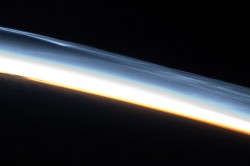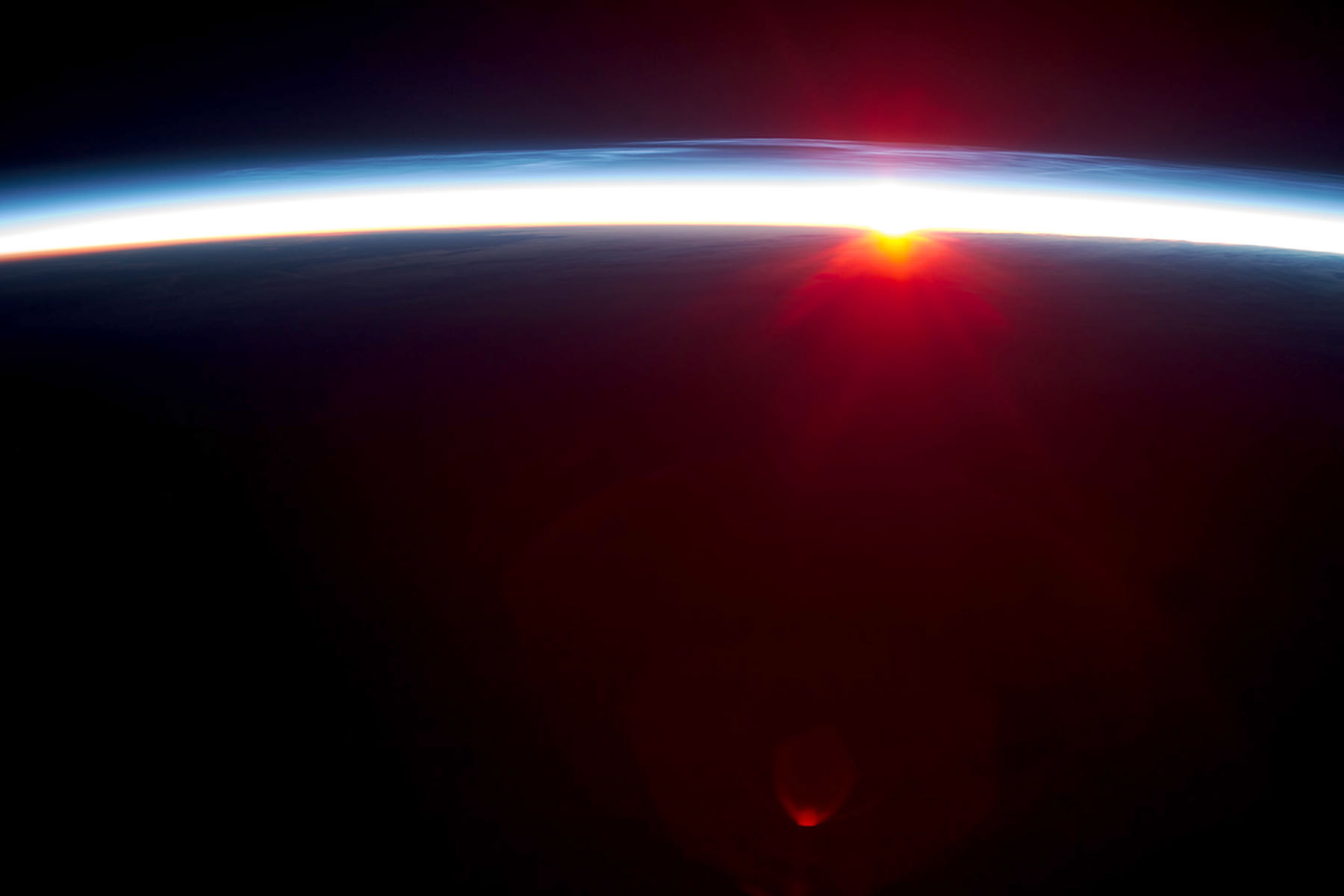Looking for a new desktop background? This might do nicely: a photo of noctilucent “night-shining” clouds seen above a midnight Sun over Alaska, taken from the ISS as it passed over the Aleutian Islands just after midnight local time on Sunday, August 4.
When this photo was taken Space Station was at the “top of the orbit” — 51.6 ºN, the northernmost latitude that it reaches during its travels around the planet.
According to the NASA Earth Observatory site, “some astronauts say these wispy, iridescent clouds are the most beautiful phenomena they see from orbit.” So just what are they? Read on…
Found about 83 km (51 miles) up, noctilucent clouds (also called polar mesospheric clouds, or PMCs) are the highest cloud formations in Earth’s atmosphere. They form when there is just enough water vapor present to freeze into ice crystals. The icy clouds are illuminated by the Sun when it’s just below the horizon, after darkness has fallen or just before sunrise, giving them their eponymous property.

Noctilucent clouds have also been associated with rocket launches, space shuttle re-entries, and meteoroids, due to the added injection of water vapor and upper-atmospheric disturbances associated with each. Also, for some reason this year the clouds appeared a week early.
Read more: Noctilucent Clouds — Electric Blue Visitors from the Twilight Zone
Some data suggest that these clouds are becoming brighter and appearing at lower latitudes, perhaps as an effect of global warming putting more greenhouse gases like methane into the atmosphere.
“When methane makes its way into the upper atmosphere, it is oxidized by a complex series of reactions to form water vapor,” said James Russell, the principal investigator of NASA’s Aeronomy of Ice in the Mesosphere (AIM) project and a professor at Hampton University. “This extra water vapor is then available to grow ice crystals for NLCs.”
A comparison of noctilucent cloud formation from 2012 and 2013 has been compiled using data from the AIM spacecraft. You can see the sequence here.
And for an incredible motion sequence of noctilucent clouds — taken from down on the ground — check out the time-lapse video below by Maciej Winiarczyk, coincidentally made at around the same time as the ISS photo above:
(The video was featured as the Astronomy Picture of the Day (APOD) for August 19, 2013.)
Source: NASA Earth Observatory

